I travelled to Okinawa to learn karate from the masters
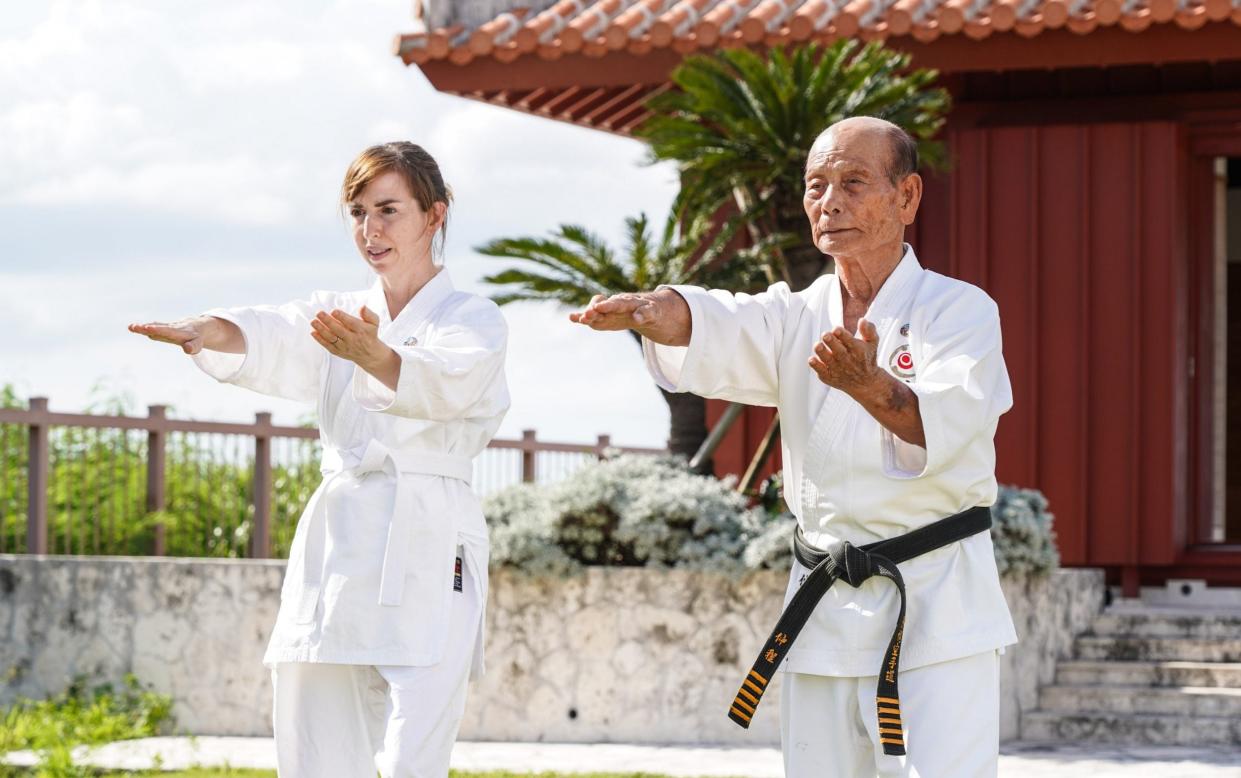
“Punchi! Punchi! Punchi!” The staccato orders of my karate master fill the wood-scented training room, jolting my eyes from views of the East China Sea meeting skies in a horizontal shimmer of blues just in front of me.
Shinjo sensei – solid as a rock in a crisp white uniform, black belt looped casually at the waist – has already smacked my wrists, tapped my hips, laughed at my “dancing” and repositioned every body part. And now? He’s holding a piece of wood between his hands and is ordering me to break it with a single karate punch.
It’s a surreal moment: I stare at the roughly cut square of cedar wood, its edges frayed with splinters, and briefly wonder whether his request could be interpreted as optional – before I inhale, fix my gaze, push my fist forward in a horizontal twist and hope for the best.
It’s not every day I karate chop a piece of wood. In fact, until that moment, the closest I’d ever been to unarmed combat were action movies or my nightly efforts to get the kids to bed. But my limited fighting skills received a dramatic upgrade during a recent trip to Okinawa, a far-flung necklace-like trail of lush sub-tropical islands sprinkled at the southernmost tip of Japan.
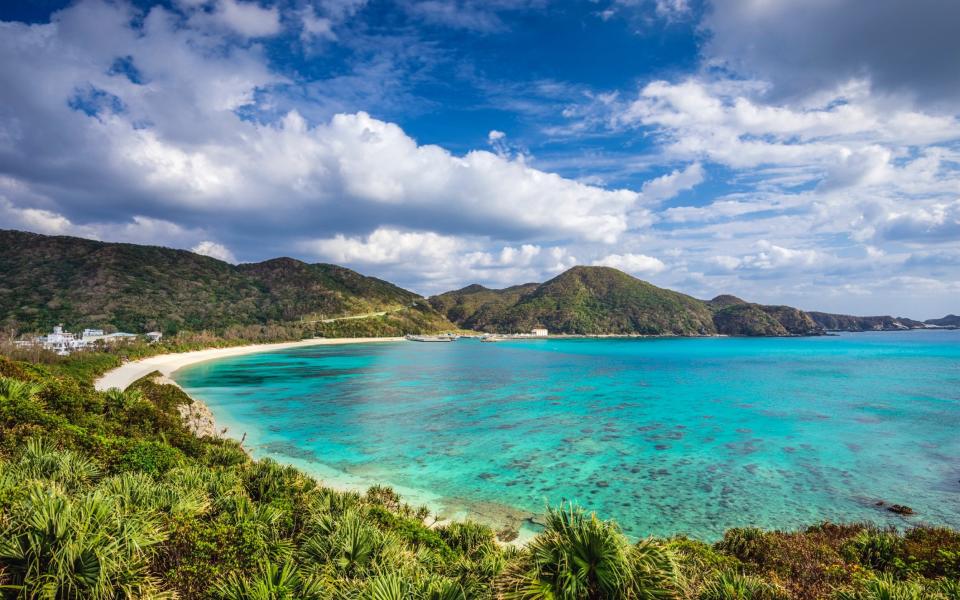
Not only is the sun-drenched region famed for its Bounty-ad perfect coral-fringed islands, unique culture, seductively relaxed tempo and high concentration of sparkly-eyed centenarians; it’s also the birthplace of karate. The ancient martial art needs little introduction, famously cultivating a fluid mastery of mind, body and spirit, through mental focus, discipline – and lightning-fast arm and leg strikes (plus optional wood-chopping skills).
Its roots meander back around 800 years when martial arts from China first arrived on the islands (then the independent Ryukyu kingdom), before invading 17th century Japanese samurai banned carrying weapons, paving the way for karate to flourish in secret. Its global popularity was cemented when the unarmed combat system (karate literally means “empty hand”) was popularised as a sport after World War Two, with an estimated 180 million practitioners today. And now, karate is on the brink of hitting its zenith, as it prepares to make its Olympic debut in the Tokyo 2020 Games, providing Okinawa’s iconic martial art with the ultimate opportunity to shine in the global spotlight.
A week before the Olympic opening ceremony, I fly to Naha, the prefectural capital, to learn from the very best karate masters. First stop is Karate Kaikan, an airy new building with a light-filtering façade inspired by a famous local castle, created to celebrate all things karate.
Here, officials first brief me ahead of meeting someone whose name is almost always preceded by the words “Living Legend”: the inimitable Tsutomu Nakahodo. I’m informed, among other details, that the famed master received an Order of the Rising Sun medal from the emperor this year; I shouldn’t be scared because “he’s normally more gentle with women”; he’s somewhere between 87 and 89 (it took his mother a few years to register his birth, hence the discrepancy); and, something of a curveball, he’s also thought to be Japan’s oldest taxi driver.
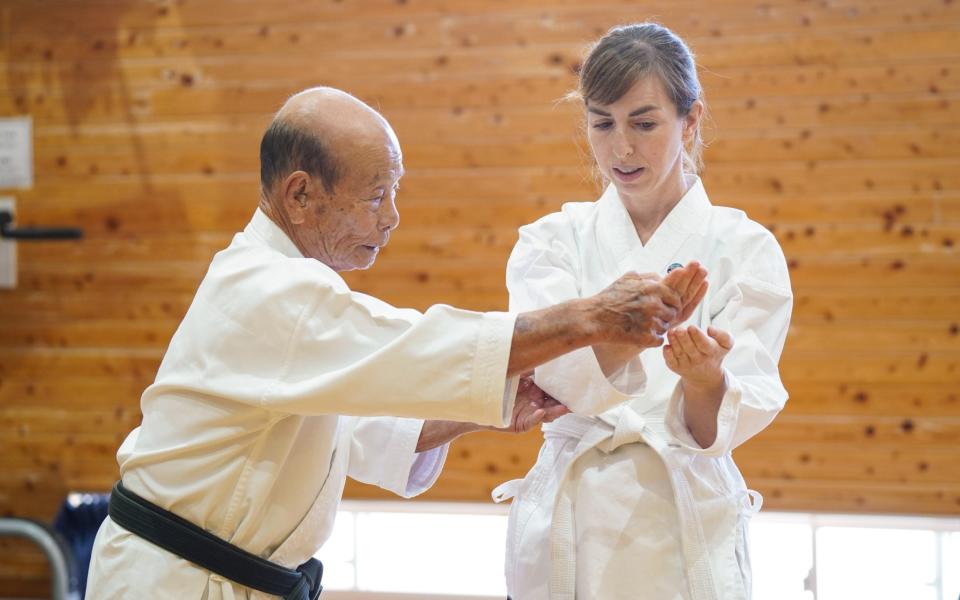
And then, I’m led into an airy wooden dojo where I finally meet Nakahodo sensei. For a titan of the karate world, he is surprisingly diminutive: before me is a small, elegant octogenarian with an impeccable white karate outfit and sparklingly clear eyes above his paper mask. Needless to say, he’s the ultimate pin-up for Okinawa’s famed longevity, looking decades younger than his somewhere-near-90 years.
After formal introductions, we begin with a demonstration. I’m surprised to see a bouncer-like bevy of three burly karate pros take off their tops (“It’s to show their muscle movement,” whispers one official), before launching into a series of kata - flowing sequences of karate moves. Even more surprisingly, Nakahodo sensei then starts hitting them: on the arms, legs, shoulders, plus the odd kick to the legs and – the finale – a punch to the stomach, without a flinch.
“It’s all about the breath,” he explains. “Kokyu. We train for years to keep our lungs only 40 per cent full of air. So there’s no pain.” As if to prove his point, he grabs my hand and jabs it into his leg – a movement that invariably hurts my fingertips more than his rock-hard thigh.
Next, the living legend (and great-grandfather-of-three) takes on the herculean task of teaching me a kata sequence called “Sanchin”. “Don’t worry, we’ll do this slowly,” he smiles. “Normally it’s so fast you can’t see my arms.”
After turning my toes out, bowing and placing right hand over left, I tumble into an awkward rhythm of copying Nakahodo sensei: the horizontal strike of a left arm, the clench of a right fist, the arc of a forearm above the eyes.
Clearly perturbed by my inability to walk properly, we backtrack and practice some footwork; again, I attempt to emulate the graceful steps of Nakahodo sensei, as one foot slides forward, toe touching the ground and knees bent, before the other follows.
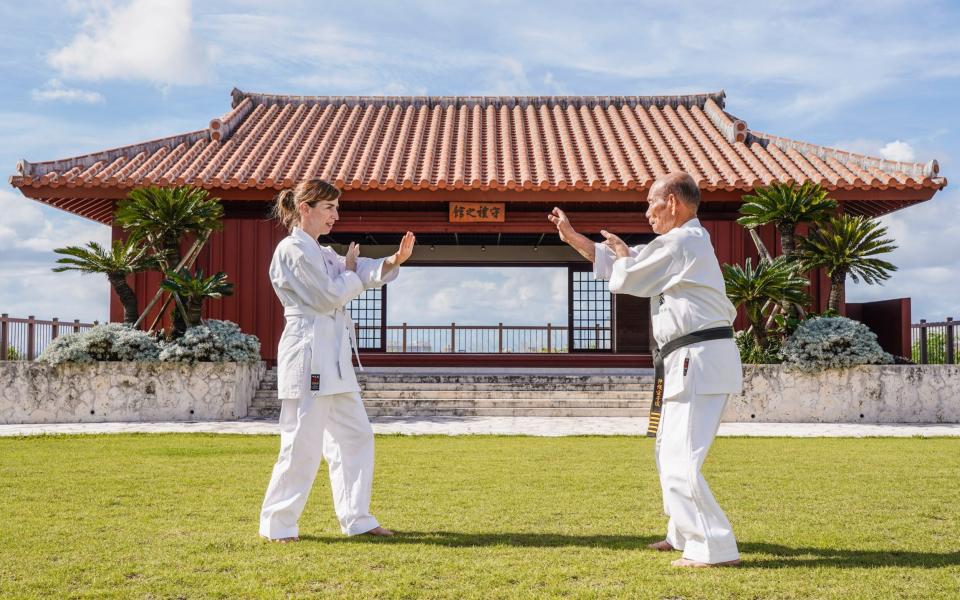
“Patience is the most important thing,” he intones. “It’s an endless spiral, like the hands on the clock on the wall. Karate integrates everything: the body and the spirit, the head and the toes.”
Back to the kata, I display an embarrassing lack of Olympian potential. Stumbling through the sequence again and again, I receive raps on weak fists and sharp taps on raised shoulders – until, to the unexpected applause of his karate entourage, our hands come together in a final “Buddha pose”, heads bowed, and our practice ends.
Sipping water on the sidelines, Nakahodo sensei explains how he began when he was 17 and still trains at least three times a week so he doesn’t look like an ojisan (old man). “I don’t exert myself and I know my limits. I sleep 8 to 10 hours a night, I take my blood pressure every day and I don’t eat fatty foods.”
After expressing joy over karate in the Olympics, while adding it’s more “culture” than “sport” in Okinawa, the conversation segues smoothly into a gripping karate tale. With some prompting, he describes how he once fought off two US servicemen who held him at knifepoint after making him drive his taxi to a remote spot several decades ago. “I could tell they were amateur from the way they held the knife and pulled back their arms before striking,” he says quietly, eyes still sparkling.
The next morning, I meet Nakahodo sensei, plus black taxi, in his hometown Yomitan, a coastal village famed for sweet potatoes, ceramics and karate. He points out sugar cane fields where an airfield once lay; a busy road junction at the spot where the house in which he was born used to stand; and the trees where he played as a child, now home to a wartime memorial.
We wander through a nearby garden, past a carp pond carved into the shape of Okinawa island by his brother, and enter the house, pausing by black and white portrait photographs above a small family shrine. As the conversation meanders easily - from family life to a brief allusion to fleeing north at 13 to avoid invading US troops – it’s hard not to deduce a thread of connection between the thriving discipline of karate, also known as “the martial art of peace” in Japanese (a key mantra is “never attack first”), with the wartime scars that still imprint the region.
A short drive away, another side of Yomitan comes into focus, as I arrive at Hoshinoya Okinawa, a stylish new luxury hotel whose modernist architecture hugs the coastline. Here, behind a bold concrete expanse of castle-inspired walls is an air of utopia - choruses of cicada, overgrown banyan trees, impossibly exotic flowers – with villas and suites framing views of a gradation of blues, a paper-thin line between sea and sky.
Hints of Okinawan culture flow throughout – from textile artworks above the beds and ceramics – right down to a new experience devoted to all things karate. I start with an evening karate meditation session in a scenic dojo overlooking the sea, movements synchronised with breathing – culminating in a special karate nightcap in my villa: a thimble-sized cup of a deliciously fiery vintage Okinawan spirit awamori.
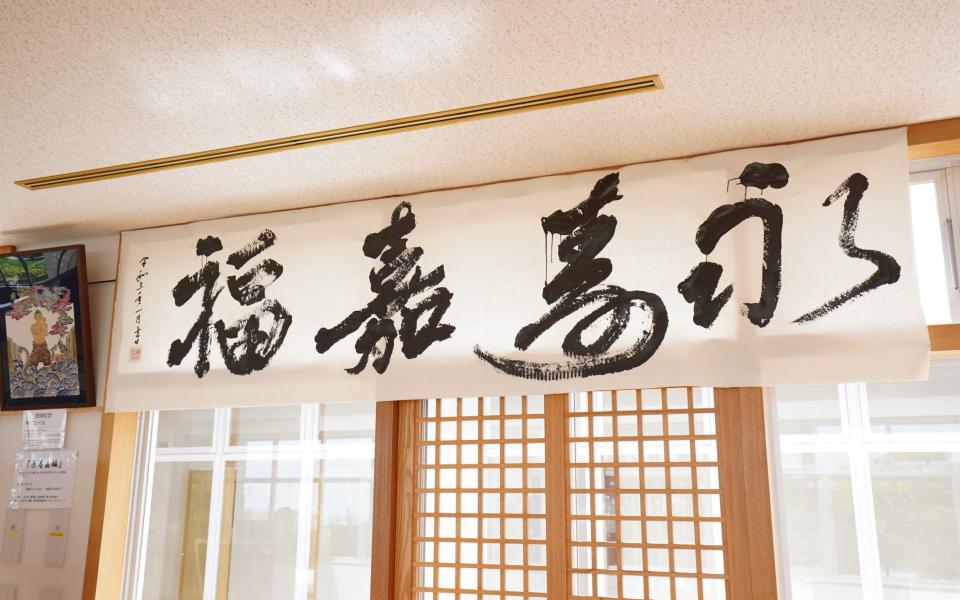
The next day, back in the dojo, I meet the sturdy, charismatic sensei Shinjo Kiyohide, another long-famed Okinawan karate champion who has been practicing karate since he was 10 (now 69, he glows with good health). Once again, it’s kata time. He shouts out a series of precise orders - “turn feet out 30 degrees!” and “arms 20cm above your body!” – as, once again, I awkwardly imitate the movements.
Then, after practicing some punches and kicks, without fanfare or warning, he pulls out several pieces of wood from a green shopping bag. I’m not sure whether to laugh or cry as he ominously holds the first up in the air between his hands. “Tap here on the count of one and two,” he orders in a voice that is clearly non-negotiable. “And then… Punchi! Punchi! Punchi!”
And so it is, that after less than two days of karate, I am peering at a piece of wood, before my arm shoots out – and somehow, magically, it breaks, cartoon-like, into two – before I do the same with a karate kick.
Let’s be honest, the wood was probably the thinnest available – but the experience was exhilarating (plus my children were deeply impressed when they saw videos later – here’s hoping unarmed bedtime combat gets easier).
It offered just the tiniest glimpse into the world of karate, as Shinjo sensei sums up: “I always say “it’s never enough”. Karate is a lifetime’s practice. My training ends when I die.”
The last piece of the karate jigsaw puzzle unfolds later in the spa, with a deep shiatsu massage, strokes inspired by kata moves. Teetering on the edge of sleep, wood-chopping memories floating into consciousness, I realise I may never be in line for an Olympic karate medal – but it was the perfect taster of Okinawa’s martial art of peace.
Essentials
The writer travelled as a guest of the Okinawan Convention & Visitors Bureau and Hoshinoya Okinawa.
Karate Kaikan (karatekaikan.com) offers 100-minute beginner karate experiences in English. Costs depend on the number of people (for example, it’s around 8,800 yen each for groups of four). It’s also home to a karate museum and restaurant.
Hoshinoya Okinawa (0081 570 073 066; https://hoshinoya.com/okinawa/en/) will offer a special two-night Ryukyu Karate Stay from September, including three karate training sessions, two meditations, a shiatsu massage and Awamori nightcap, from 84,300 yen a person, excluding accommodation. Room only doubles from 130,000 yen.
For more information about Okinawa, visit visitokinawa.jp; and for information on exploring karate in Okinawa, visit karate.ocvb.or.jp.
Travel overseas is currently restricted. Check the FCDO advice at gov.uk/foreign-travel-advice before you travel.


